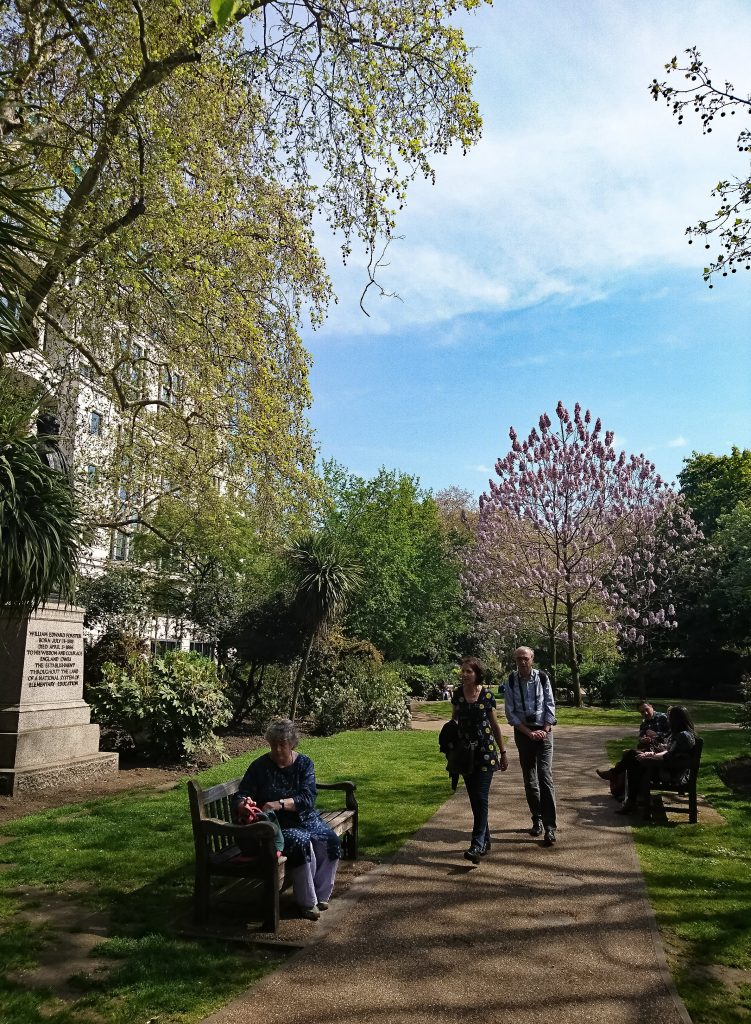Scientific studies have well documented the benefits that access to nature and wildlife in urban settings can bring to cities. In addition to these vast environmental and sustainability benefits that urban greenery brings to cities, urban greenery also provides huge services that impacts positively on the health, wellbeing and sustainability of its communities.
Greenery in cities improves people’s wellbeing

Access to parks and urban greenery has been shown to have a big impact on how happy urban residents area. A European study in 2018 showed that spending just 20 minutes in a park makes people happy; and the results were shown to not be related directly to physical activity but rather to the green setting they experienced.
This should not come as a surprise to us, as natural beings we find greenery and natural settings more relaxing. The Biophilia hypothesis and effect emphasises that we need to interact with nature as part of our genetic makeup and evolutionary history; and that certain environments are crucial for this. These include wide open spaces (like plains or savannah) that are fringed with trees and that provide opportunities for interaction with nature.
This is reflected in research that shows that the type of natural setting and space has an important impact on the benefits that it brings to urban communities. For instance, studies have shown that the more scenic a natural space is the happier it makes people feel. However, further studies have shown that urban greenery that is wild and more natural provides larger benefits for urban ecosystems. These are big drivers of the need for well maintained, beautiful but importantly natural and wild urban greenery.
Urban trees reduce stress & improve brain function

Interacting with trees and nature in addition to making us feel happier also has tangible impacts on our bodies’ stress levels by lowering our blood pressure (more than medication in some cases), reducing stress and anxiety levels, improving our memory and making us more creative. Check out our Forest bathing article for more information and how to get all these benefits and more.
Urban greenery increases activity levels

In addition, living near urban greenery and parks can also increase the probability of people being more active. This includes a higher propensity of people to walk. The resulting impact of increases in activity levels for both physical and mental health prove that trees are an essential part of creating healthy cities.
European research has shown that people living in nature deprived areas are more likely to be obese, suffer from depression, die younger and be inactive. With the evidence being so strong that they recommend that every human being lives at within at least 300 meters of greenery.
The World Health Organisation also recommends that people interact with greenery in urban areas due to the large range of benefits that green spaces bring to people; and that the lack of walkability and access to recreational areas, accounts for 3.3% of global deaths.
Trees in cities improve children’s lives

Access to natural greenery and open spaces are also vital to the health, wellbeing and development of children, especially in cities. Research has shown that children who live in areas with more greenery, engage in high levels of moderate to vigorous physical activity – which is key for children to achieve the 60 minutes of daily recommended exercise.
Living near green spaces also has a big impact on children’s mental health, with children who grow up in greener areas having up to 55% less risk of developing various mental health disorders in later life. The large Danish study found that the impact of greenery on the reduction in risk takes place up to the age of 10.
Children themselves gave also reported to prefer more natural green spaces than concrete playgrounds and formalised parks.
This emphasises the vital role that greenery and access to it plays in forming children’s physical and mental health and how important access to greenery in cities is for children.
Greenery and parks improve social interactions and community cohesion

The benefits of urban greenery don’t just stop at the individual, access to greenery has a big impact on social interactions and how healthy a community is.
Green spaces help to reduce loneliness and social isolation in cities – as well as providing the mental health benefits of interacting with nature. Green spaces provide vital places in cities for people to socialise and meet, and promoting areas that do this is an essential part of reducing loneliness. The UK government’s Loneliness strategy calls for policies to increase the amount of green spaces in cities.

Research in the book Happy City, by Charles Montgomery, on housing estates in Chicago has also shown that living on estates with greenery in public areas, compared to concrete spaces facilitates higher levels of social interaction and community cohesion as well as reductions in crime.
Access to green spaces as a marker of the health of a city
The above research and studies have highlighted how fundamental access to green spaces is to the health and wellbeing of human beings.

Adriane Benepe, who works for the New York Parks Department has said that “Parks are not simply pleasant amenities, but serve as a foundation to the social, economic, environmental, and mental health of communities. By ensuring every resident of every city lives within a 10-minute walk of a park, we can fundamentally and positively impact the quality of life for hundreds of millions.” Adriane argues that access to parks are a marker of how healthy a city is.
In summary – Access to any green spaces, whether its small parklets, street trees, parks, urban woodlands or forests are a marker of the health of a city. We need to see all cities prioritising the creation of new and maintenance of existing green infrastructure. With the aim of all city residents having equal access to green space near where they live – within 300 meters or 10 minutes walk.
Published August 2019

